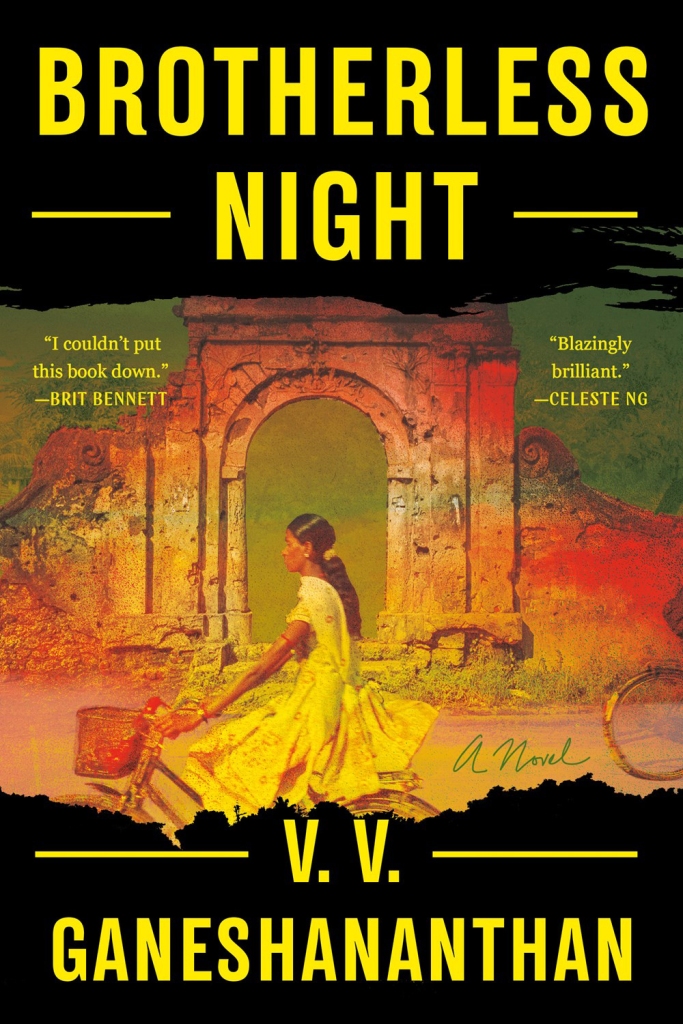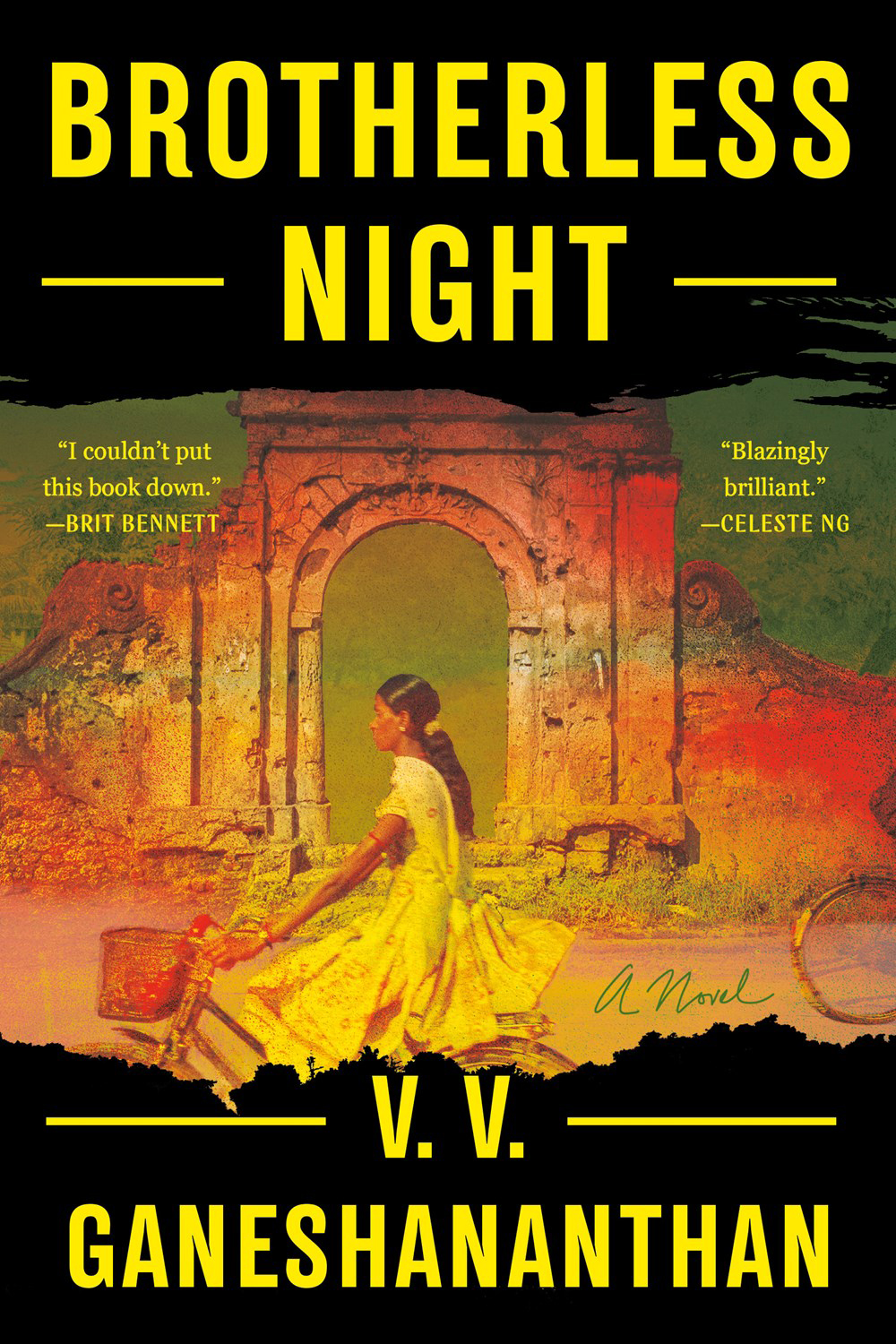One of the best parts of fiction is how specific and universal a story can be at the same time. There’s a paradox in it, in fact, where the more specific a story or a character or a situation is, the more likely it is to resonate with others.
The resonance to current events found in Brotherless Night by V. V. Ganeshananthan is far less surprising than it ought to be, but the specificity of its time, place, and characters make it a compelling and memorable story nonetheless.
Sixteen-year-old Sashi wants nothing more than to be a doctor. Although she lives in a small Sri Lankan town, her four brothers and their friend, K, let her study with them as they all pursue the same goal. But it’s 1981, and Sashi’s family, and K, are all part of the Tamil minority. Tensions between the Sri Lankan government and the growing Tamil resistance to state-sponsored violence against the minority group are growing. When Sashi’s oldest brother is killed in an government attack as a bystander, two of her brothers and K leave their studies to join the Tamil Tigers, a militia fighting for Tamil people to have their own country separate from Sri Lanka.
Sashi, as a young woman, isn’t pulled into the violence in the same way young Tamil men are. But as she continues her medical studies, she finds herself still bound to the Tigers by a thread woven by her brothers and K. When K brings a seriously injured man to her for medical treatment, she cannot say no. One night of help turns into regular shifts at the Tiger’s field hospital, helping patch up fighters and civilians alike from the ongoing war. But the violence she sees isn’t only against the Sri Lankan government, and she grows concerned about the number of people caught in the crossfire–including a beloved teacher. As her brothers and K commit more and more to the movement, and as Sashi sees more and more from her place as a medic, Sashi begins to question whether the Tigers really have the moral high ground.

My previous experience with the war between Sri Lanka and the Tamil Tigers, living my cozy life in the U.S., has been mostly limited to a few headlines and some nonfiction reading. Brotherless Night is a vivid novel from the civilian point of view that I didn’t know I was missing. Between her race, her medical skills, and her connections to devout Tigers, Sashi can’t avoid some involvement in the conflict, but her relative neutrality gives her access to both worlds, the militant and the civilian. She sees the cost of action, and of inaction. She makes her own choices with their own risks. Told from the perspective of a modern-day Sashi looking back at the tumult of her youth, she tells of the violence and her growing understanding of it with the same matter-of-fact attitude, though it’s clear that anger still simmers under the surface.
Because whether or not the violence was productive, she shows, far too many people were hurt to make it right. When two, or more, sides are fighting, it’s the people in the middle who are most affected. While that particular war might finally be in the past, the lesson of the everyday person as collateral damage to a war they likely had no way of preventing and now no way of stopping remains curiously and tragically relevant for new far-off wars that bring the occasional headline to U.S. eyes.
